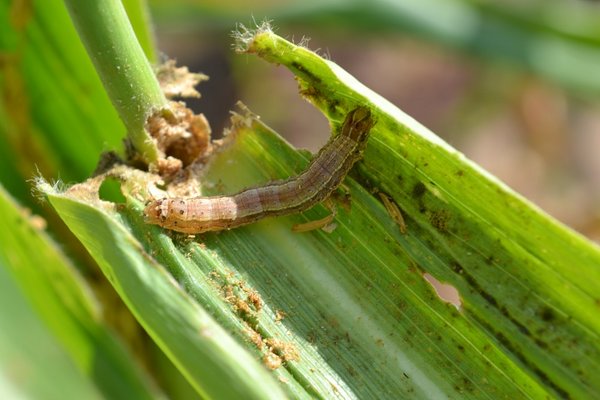 Read this article in French
Read this article in French- Share this article
- Subscribe to our newsletter
Invasive Alien Species cost Africa an estimated USD 3.6 trillion a year
CABI scientists have conducted the first comprehensive study on the economic impact of a range of Invasive Alien Species (IAS) on Africa’s agricultural sector, which they estimated to be USD 3.6 trillion a year. This is equivalent to 1.5 times the Gross Domestic Product (GDP) of all African countries combined – or similar to that of Germany. The paper was published in May 2021 in the journal CABI Agriculture and Bioscience.
The team, comprising scientists from CABI centres in Africa and Europe, conducted a thorough literature review and online survey of 110 respondents – largely working in government or research – and established that Tuta (Phthorimaea) absoluta caused the highest annual yield losses at USD 11.45 billion, followed by the fall armyworm (Spodoptera frugiperda) at USD 9.4 billion.
The research took account of yield losses of major crops including maize, tomato, cassava, mango and banana (USD 82.2 billion), as well as labour costs – through weeding (USD 3.63 trillion) – and loss of income derived from livestock (USD 173 million).
The annual impact of IAS – which also included Prostephanus truncatus, Bactrocera dorsalis and Banana bunchy top virus (BBTV) – was highest on cassava (USD 21.8 billion), followed by citrus fruits (USD 14.6 billion), tomato (USD 10.1 billion), maize (USD 9.8 billion) and banana (USD ,7.1 billion).
“The results highlight the need for measures that prevent new species from arriving and established species from spreading, and that reduce management costs for widely present and impactful species through methods such as biocontrol,” said lead author Dr René Eschen. “This will potentially reduce future production costs, lower yield losses and improve the livelihoods of farmers and other affected land users.”
Co-author Dr Bryony Taylor said “We have added to the knowledge base of the costs of Invasive Alien Species to Africa’s agricultural sector by including all countries within the continent where previous research only included a few,” .explained co-author Dr Bryony Taylor.“We also include the cost of reduced livestock-derived income and research and labour costs, which are generally not included in estimates of the costs of Invasive Alien Species.
“The results of this study provide policy-makers with the evidence needed to enable prioritisation of management measures for IAS, thereby reducing costs in the long term.”
Fernadis Makale, another co-author on the paper, said, “The large estimate for the weeding costs may come as a surprise but this work, often carried out by women and children, is never measured as part of the African economy.
“Moreover, it should not be concluded that people are being paid that amount as salaries. Rather, the estimate represents an opportunity cost, meaning that if people didn’t need to weed IAS could do something else, such as going to school or undertaking an income generating economic activity,” said Fernadis Makale, another co-author on the paper.
“In addition, our study provides evidence of the need for country and regional quarantine and phytosanitary measures to prevent the entry and spread of new IAS, preventing additional, potentially huge costs as new IAS spread across the continent.”
The AU’s Strategy for Managing Invasive Species in Africa
The study comes after a policy summit on Invasive Species held in 2019, where 70 delegates, representing policy-,”makers, research, the private sector and civil society from across Africa, resolved to develop a strategy and action plan to fight against Invasive Alien Species.
“An estimated USD 3.6 trillion a year impact of Invasive Alien Species on Africa’s agricultural sector is a tremendous loss where over 80 per cent of people living in rural areas rely on the crops they grow for food and income,” said Dr Dennis Rangi, Director General, Development, CABI, in response to the findings.
“Under the African Union’s stewardship, countries now have a Strategy for Managing Invasive Species in Africa. The 2021-2030 strategy provides a framework for all relevant stakeholders at the continental, regional and national level can use to sustainably prevent and eradicate invasive species in Africa.”
Currently in its first year of implementation, the Invasive Alien Species strategy outlines six key areas of focus under its 2021-2025 action plan. One of the priority areas is the establishment in 2022 of continental, regional and national emergency funding mechanisms for rapid action against Invasive Alien Species.
(CABI/wi)
Full paper reference:
René Eschen, et al: ‘Towards estimating the economic cost of invasive alien species to African crop and livestock production’, CABI Agriculture and Bioscience, 20 May 2021, DOI: 10.1186/s43170-021-00038-7
Read the full press release on the CABI website





Add a comment
Be the First to Comment